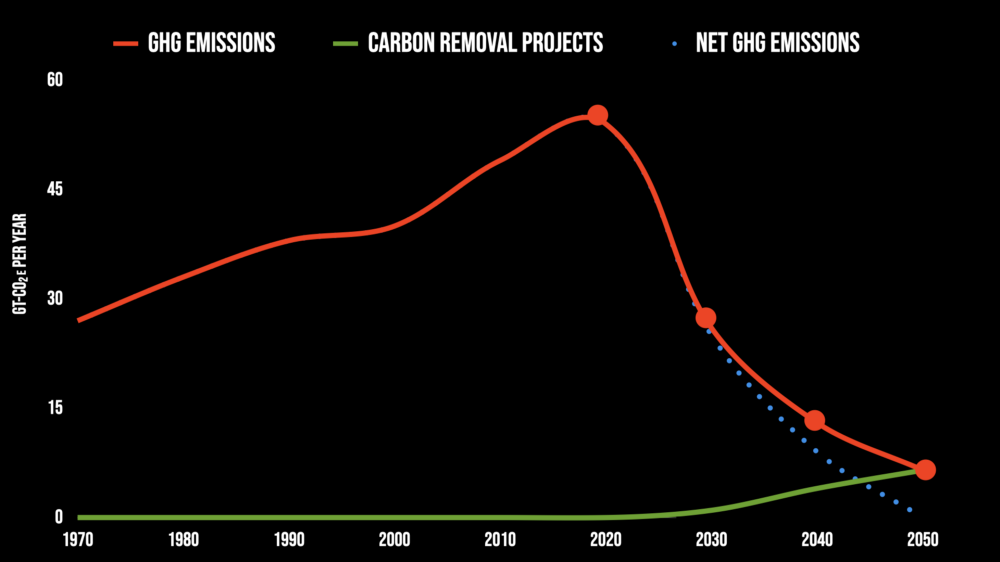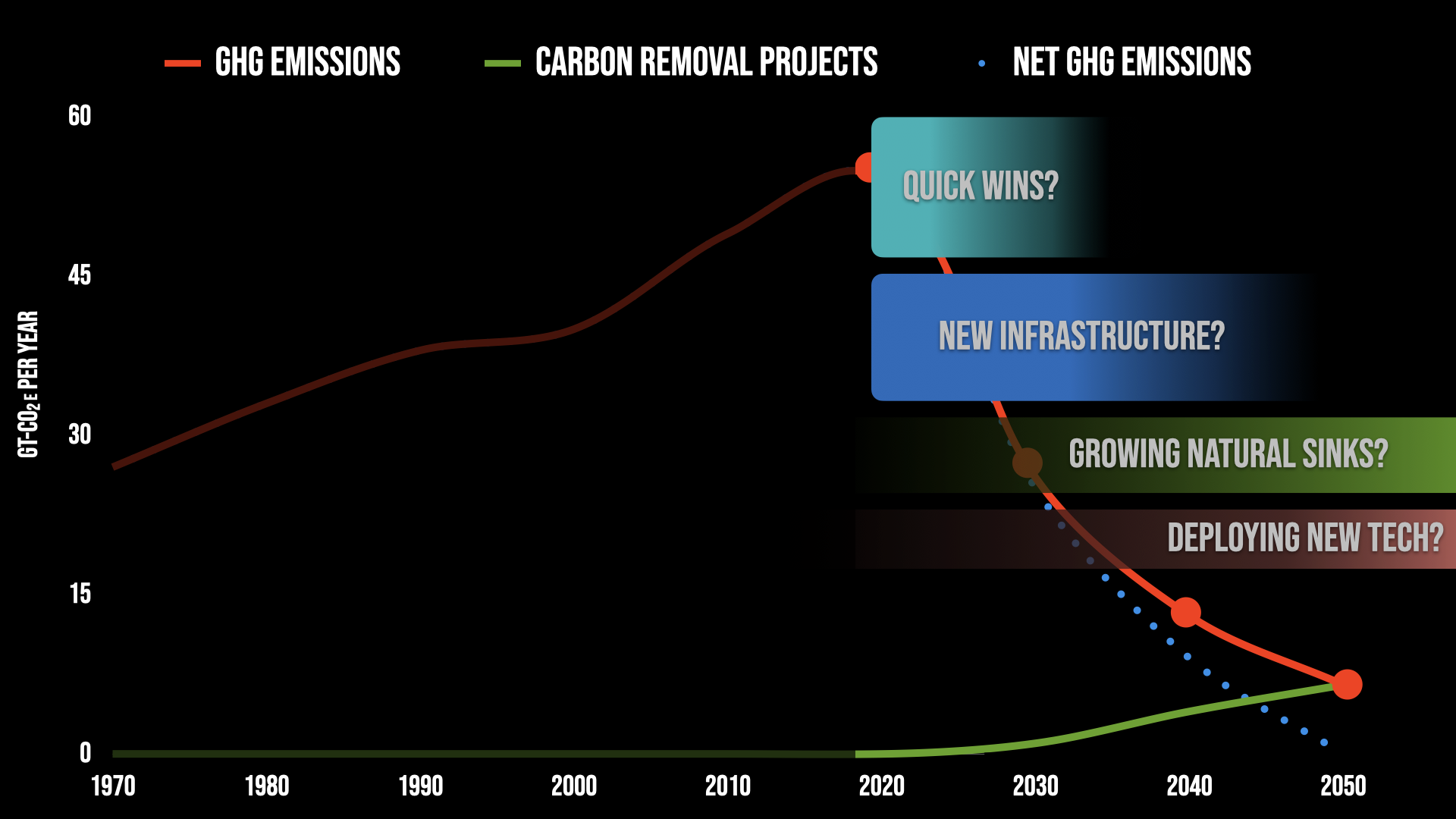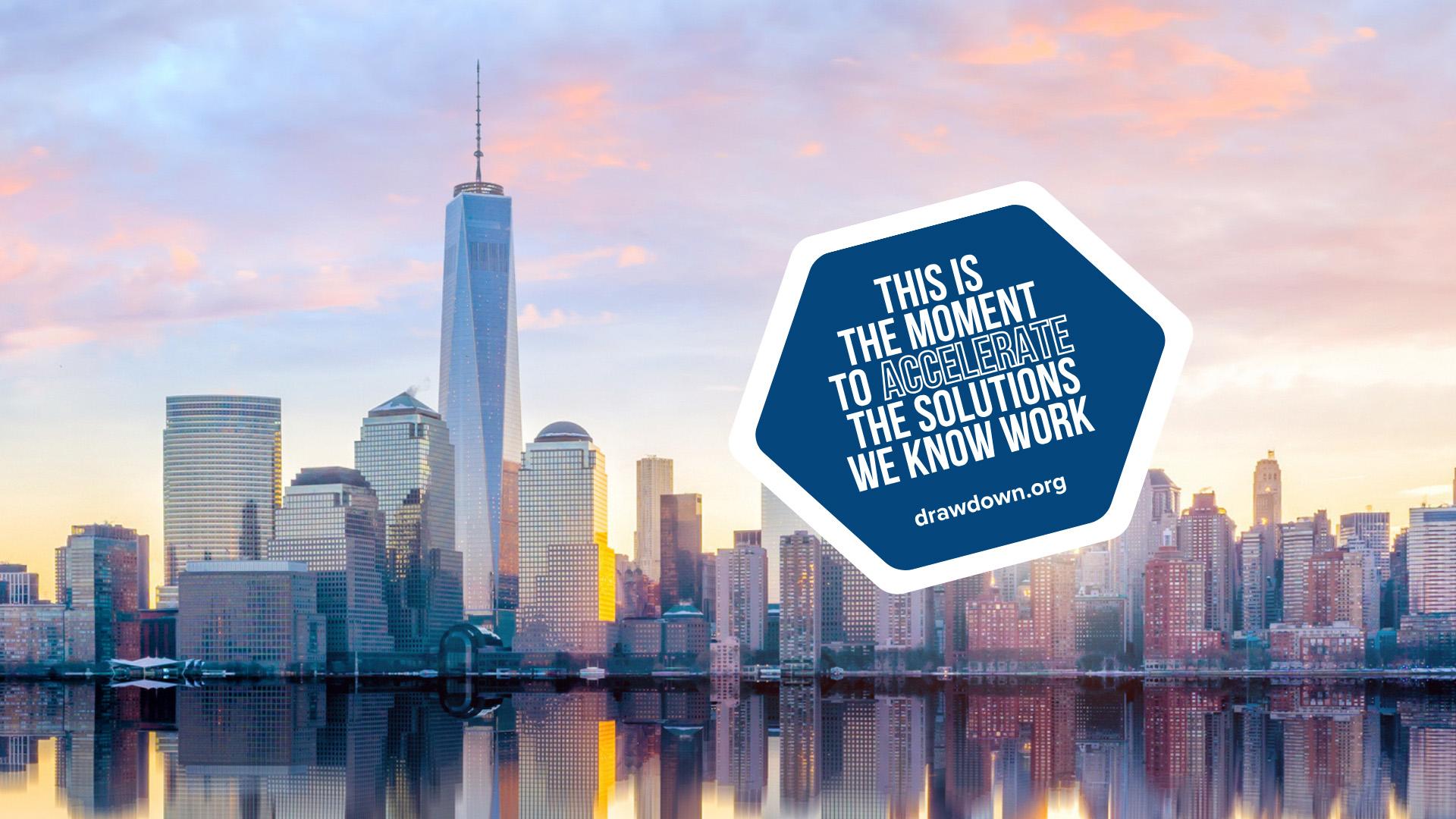As we look to halving emissions by ~2030 and reaching net zero by ~2050, I like to think of climate solutions moving in “waves” along several parallel fronts. Each one of these “waves” needs to begin today—but they unfold differently and yield results over time.
To understand this, it is important to see that each family of climate solutions has a characteristic timescale associated with it. That is, climate solutions tend to cluster into different categories, each with its own sequencing and pace.
For example, some actions can return rapid results, like radically improving energy efficiency, stopping deforestation, or capping methane leaks and black carbon emissions. Others make steady progress as we upgrade the world’s infrastructure—electrifying millions of buildings and vehicles and changing practices on millions of farms and ranches across the globe. Some others are naturally slower, like sequestering carbon by planting trees or regenerating soils, which build up over decades. And some solutions could be game-changers in the future but still require decades of research and development to come to fruition.
I think we need all these solutions—pursued in parallel. The challenge is to weave them together over time, to make the most progress possible, decade by decade.
Below, I have organized climate solutions into four major waves of action, which I think can play out in different ways.
1. Quick Wins
To dramatically cut emissions in the 2020s, we need aggressive and immediate action. Fortunately, there are solutions that can help with this.
Some “Quick Win” solutions focus on halting highly destructive practices, such as widespread deforestation, flaring and fugitive emissions of methane, and “black carbon” emissions from dirty cookstoves, biomass burning, and other sources. The moment we stop these practices, their emissions cease too. And reducing methane and “black carbon” emissions helps a great deal in the short term, as they pack a huge warming punch up front, while carbon dioxide warms more gradually. In other words, cutting methane and black carbon emissions now buys us time while we tackle other emissions.
Other “Quick Win” solutions focus on efficiency and waste, which can also achieve rapid emissions reductions. There are enormous opportunities to be more efficient in electricity use (especially in buildings and industrial processes), industry (through better management of waste and materials, especially refrigerants), transportation (increased fuel efficiency and alternative transportation), and buildings (with weatherization, insulation, building automation, and preventing refrigerant leaks). And in the food sector, we should dramatically cut food waste (~30–40% of the world’s food is never eaten), which can also greatly lower emissions.
There are obstacles to implementing all of these solutions, of course, but they offer large and immediate emissions reductions, plus strong economic returns. They are among the lowest hanging fruits, and that’s what we need for immediate results.
2. New Infrastructure
In addition to “Quick Wins,” we simultaneously need to start replacing old infrastructure with new, low-emitting systems.
To begin, we have to shut down fossil fuel energy sources and deploy renewable energy across the planet as quickly as possible. But given the enormous physical infrastructure and capital involved, this will inevitably take time. Even the most aggressive scenarios of this energy transition require the 2020s and 2030s to complete.
Beyond phasing out fossil fuels and replacing them with renewables, we will simultaneously have to electrify everything. That means updating nearly every building on Earth so that heating and cooling systems are using renewable electricity. We will also have to retire nearly every vehicle on Earth, replacing them with electric bikes, cars, trucks, and trains.
And we will have to change almost every farm and ranch on Earth, transitioning them from highly-emitting farming techniques to low-emissions methods, including so-called regenerative practices.
We need to get started on all of these big transitions today, but given the massive infrastructure (and capital) turnover involved, this is going to take a concerted effort over two or three decades to accomplish. It reminds me of the old joke: Question: What’s the best time to get started? Answer: 30 years ago. Question: What’s the second-best time to get started? Answer: Today.
3. Growing Natural Sinks
The only viable paths to address climate change require we eventually bring emissions to zero. But we can also create carbon sinks—especially using nature-based carbon removal approaches—that absorb some of our emissions, or even begin to remove some of our past pollution.
To do this, we must start by protecting Earth’s existing carbon sinks, found in forests and the ocean. While we want to build additional carbon sinks, we first need to ensure that existing sinks—which remove ~55% of our carbon dioxide emissions and ~40% of our total greenhouse gas emissions—are maintained. If these start to decline, we will be under even more pressure to cut emissions and create other carbon sinks.
Beyond protecting nature’s existing carbon sinks, we can start to add new ones by restoring ecosystems, especially by planting trees. There are discussions about planting billions and billions of trees to absorb some of our remaining emissions. However, the merits and practicality of these schemes are still hotly debated. In addition to tree planting, we could use regenerative farming practices on croplands, pastures, and degraded lands — building back carbon in the soils and vegetation, creating new carbon sinks. There are debates about the effectiveness of these solutions, but there is enormous potential for carbon uptake on our working lands.
This wave of climate solutions is, by its very nature, steady and gradual, playing out over decades. Protecting nature’s current carbon sinks and adding new ones is a long-game, based on building carbon stocks in trees and soil. We should start this work today and continue to protect our natural ecosystems and regeneratively manage our working lands through the next few decades and beyond.
4. Deploying New Tech
The other waves can address most of our emissions and create significant new carbon sinks. But there are areas that are difficult to decarbonize and will require new technology. And there are opportunities to use technology to remove carbon from the atmosphere beyond what nature-based solutions can do. This is where focused research and development efforts, starting today, could pay off in the long run.
This wave of climate solutions depends on new technology, but as an “end game” move in the climate chess match. These will take time to develop, so we should rely on other, existing solutions in the next two decades, leaving these new technologies for the final moves.
Specifically, I think we need to focus on research and development, starting today, to make carbon-free cement, steel, plastic, and jet fuel. There are pilot projects to do this today, but they are far from economically competitive and scalable. But with some significant investment, I am confident we can find good, cheap, reliable ways to do this in the coming decades.
In addition, there are interesting ideas about removing carbon from the atmosphere using a variety of industrial and chemical processes. At present, these are only small pilot projects, not nearly enough to make a dent in the atmosphere. But with a decade or two of additional research and development, these technologies may mature to be able to remove our last, hard-to-decarbonize emissions in the 2040s.
A (potentially big) mistake would be to let the promise of carbon removal technology be an excuse to delay immediate emissions cuts. These technologies are likely decades away and only absorb some of our final emissions. That’s where they should focus.














